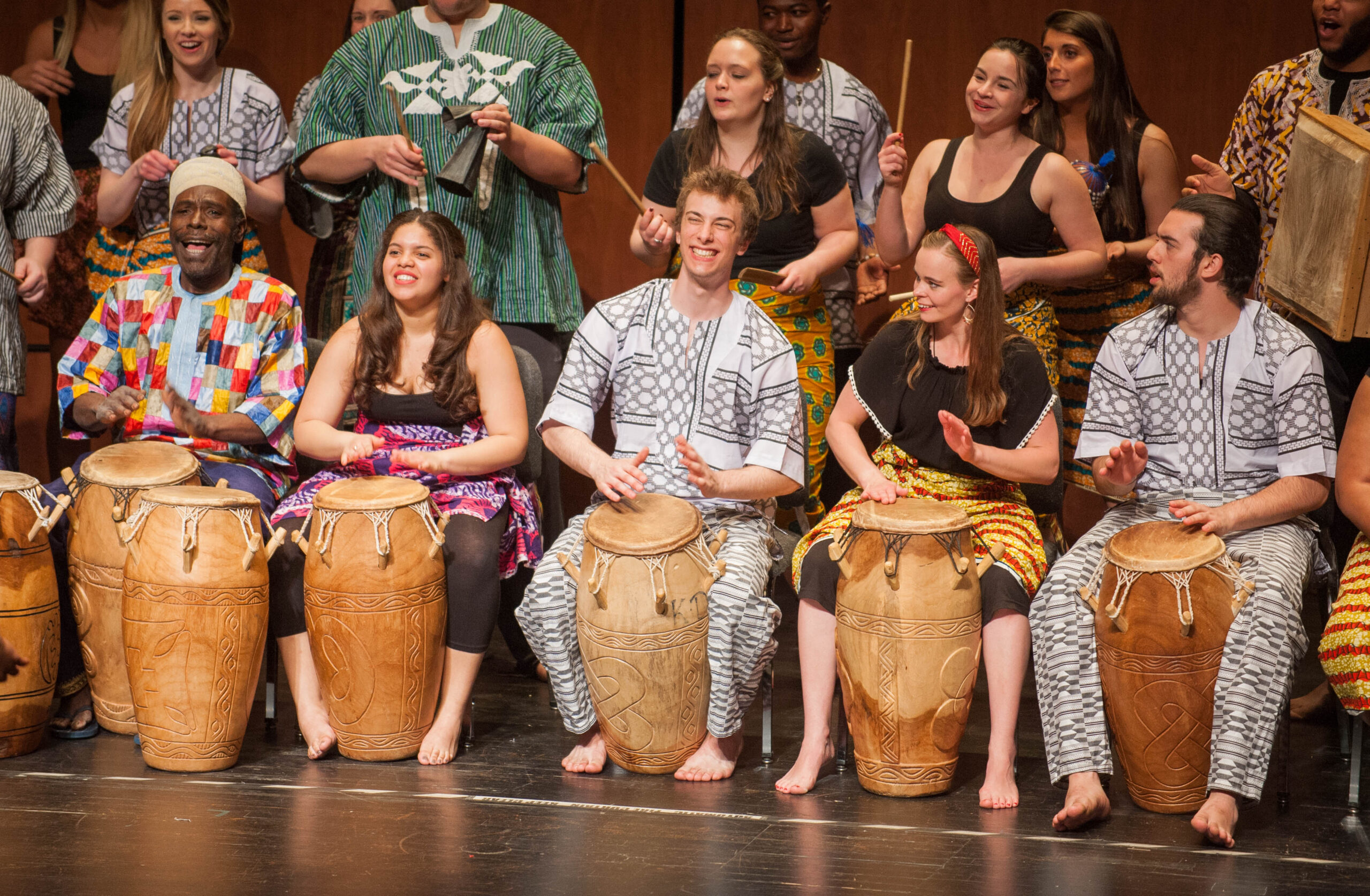Beats of Unity
In my last semester of college, I took a class on West African Music and Drumming to complement my experiences with dance. In this class, we focused on three traditional songs – Gahu, Tokoe, and Kpanlogo. Each piece introduced unique rhythms that required precise coordination and deep cultural understanding, enhancing my appreciation for West African musical traditions.
We learned to play a variety of instruments, each with its own role and voice in the ensemble. The Kidi drum, with its compelling beats, the Sogo drum, offering deeper, resonant tones, and the Kaganu, added to the richness of our music. Additionally, playing the Gankogui (bell) and the Axatse (shaker) taught me the importance of supporting rhythms in creating the overall harmony of the song.
Transitioning from a dancer to someone providing the music was an eye-opening experience. As a dancer, I interpreted music through movement, embodying the rhythms in physical form. As a drummer, I was on the other side for the first time, creating the beats that set the foundation for dance. This role reversal deepened my understanding of the relationship between music and dance, and showed me the importance of each beat and rhythm in serving as a direct communication to dancers, guiding their movements and expressions.
This class was more than simply learning how to play instruments – it was an immersive experience that connected me to the stories and emotions in West African music. Similar to my dance experiences, playing these drums was a powerful expression of communal joy and cultural celebration. Playing the various instruments and singing together as a class, allowed us to build a shared understanding and bond.
It was in these moments that a powerful feeling of connection would overwhelm me – our shared joy for music transcending cultural barriers and bringing us together to share in the universal language of expression and unity. That, I learnt is the true power of music and dance.
